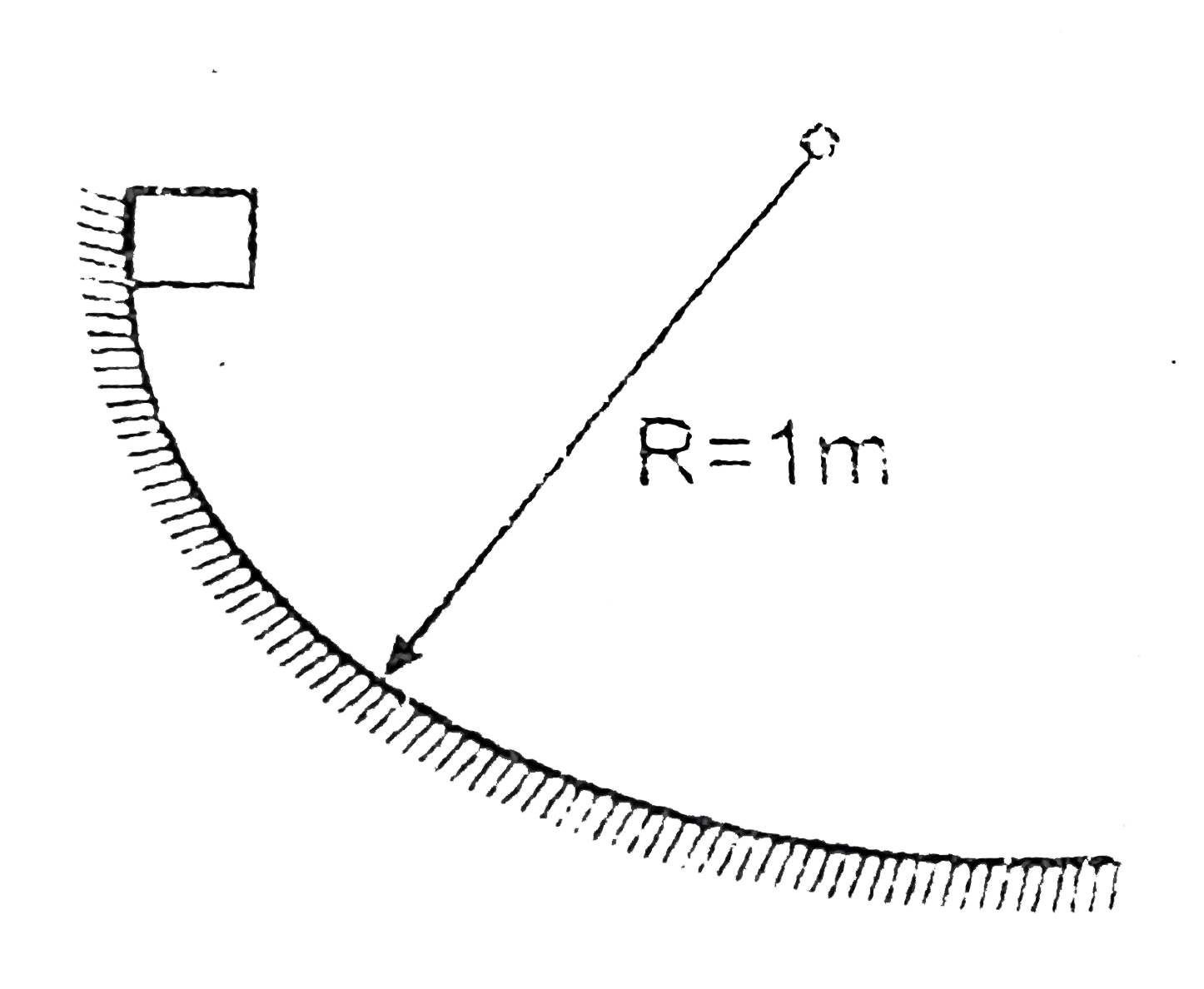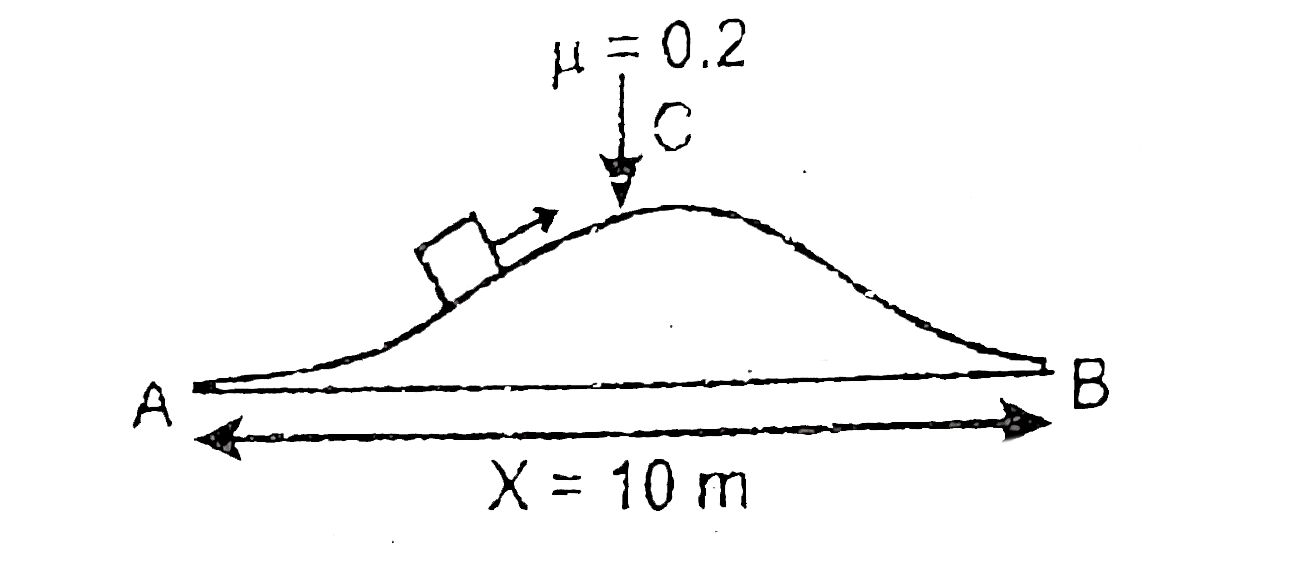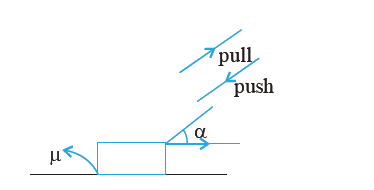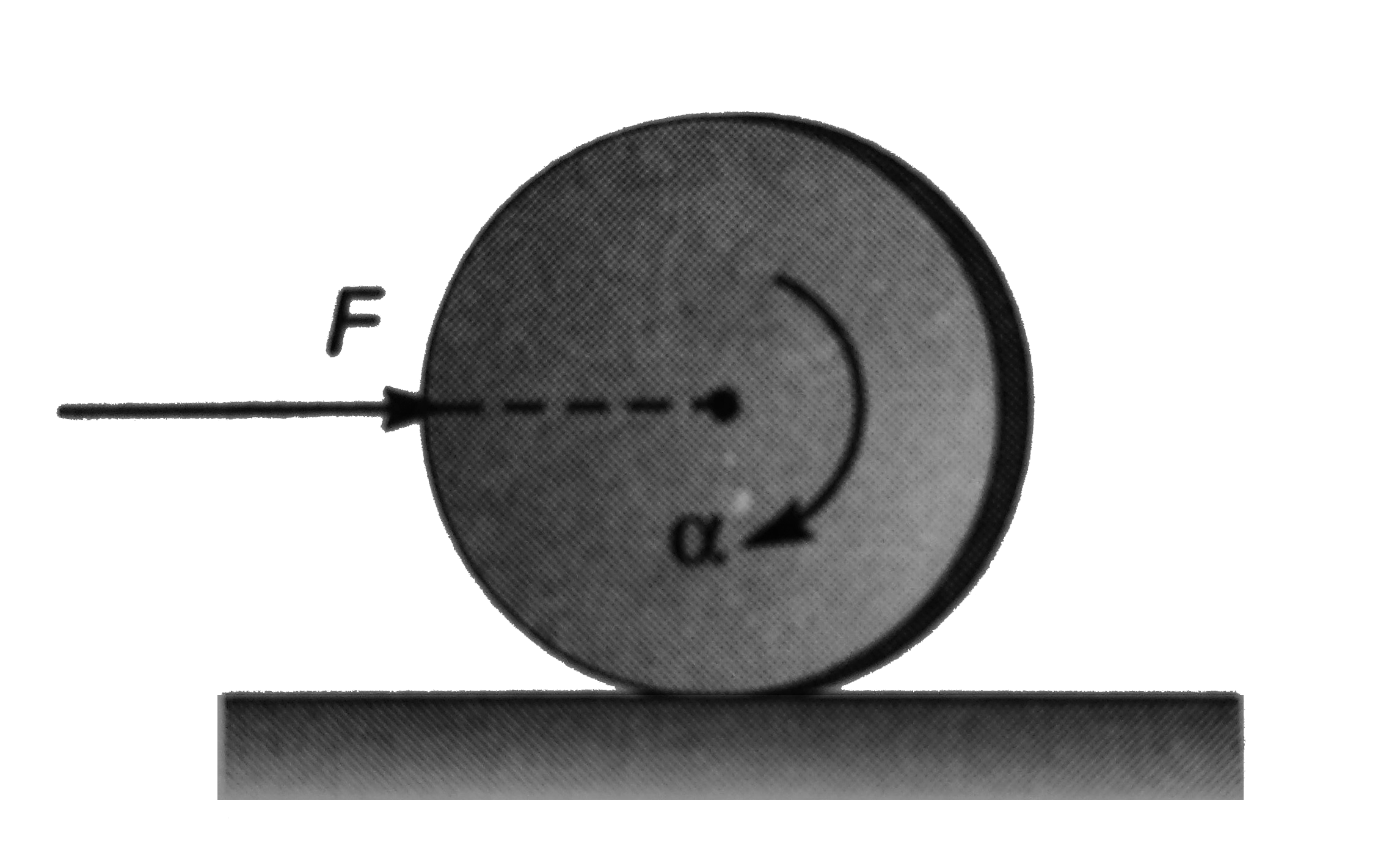Work done by a frictional force is
Is always zero
is always negative
Is always positive
May be positive, negative or zero
The correct Answer is:D
To determine the work done by a frictional force, we need to analyze the scenarios in which friction acts on an object. Here’s a step-by-step solution:
Step 1: Understanding Work Done
Work done (W) is defined as the product of the force (F) applied on an object and the displacement (d) of that object in the direction of the force. Mathematically, it is given by:
W=F⋅d⋅cos(θ)
where θ is the angle between the force and the direction of displacement.
Step 2: Analyzing the Case of Static Friction
When an object is at rest and a force is applied but does not overcome static friction, the object does not move. In this case:
- Displacement (d) = 0
- Therefore, work done by friction (W_friction) = 0.
Step 3: Analyzing the Case of Kinetic Friction
When the applied force exceeds the static friction, the object starts to move. The frictional force now acts in the opposite direction to the displacement. In this case:
- Displacement (d) > 0
- The angle θ between the frictional force and displacement is 180 degrees (since they are in opposite directions).
- Therefore, work done by friction (W_friction) = F_friction * d * cos(180°) = -F_friction * d, which is negative.
Step 4: Considering Different Scenarios
1. Static Case: Work done by friction = 0 (object not moving).
2. Kinetic Case: Work done by friction = negative (object moving against friction).
3. Friction on an Upper Block: If friction acts on an upper block in the same direction as its displacement, then:
- Work done by friction = positive.
Conclusion
From the analysis, we can conclude that the work done by a frictional force can be:
- Zero (when the object is at rest),
- Negative (when the object is moving against the friction),
- Positive (when friction acts in the direction of displacement).
Thus, the correct answer is that the work done by a frictional force may be positive, negative, or zero.
Final Answer
The work done by a frictional force is: Maybe positive, negative, or zero.
---
Work done (W) is defined as the product of the force (F) applied on an object and the displacement (d) of that object in the direction of the force. Mathematically, it is given by:
W=F⋅d⋅cos(θ)
where θ is the angle between the force and the direction of displacement.
When an object is at rest and a force is applied but does not overcome static friction, the object does not move. In this case:
- Displacement (d) = 0
- Therefore, work done by friction (W_friction) = 0.
When the applied force exceeds the static friction, the object starts to move. The frictional force now acts in the opposite direction to the displacement. In this case:
- Displacement (d) > 0
- The angle θ between the frictional force and displacement is 180 degrees (since they are in opposite directions).
- Therefore, work done by friction (W_friction) = F_friction * d * cos(180°) = -F_friction * d, which is negative.
1. Static Case: Work done by friction = 0 (object not moving).
2. Kinetic Case: Work done by friction = negative (object moving against friction).
3. Friction on an Upper Block: If friction acts on an upper block in the same direction as its displacement, then:
- Work done by friction = positive.
From the analysis, we can conclude that the work done by a frictional force can be:
- Zero (when the object is at rest),
- Negative (when the object is moving against the friction),
- Positive (when friction acts in the direction of displacement).
The work done by a frictional force is: Maybe positive, negative, or zero.
Topper's Solved these Questions
- WORK, ENERGY AND POWERBOOK - AAKASH INSTITUTE ENGLISHCHAPTER - WORK, ENERGY AND POWEREXERCISE - SECTION-B (SUBJECTIVE TYPE QUESTIONS) (ONE OPTIONS IS CORRECT)
45 Videos
- WORK, ENERGY AND POWERBOOK - AAKASH INSTITUTE ENGLISHCHAPTER - WORK, ENERGY AND POWEREXERCISE - SECTION-C (OBJECTIVE TYPE QUESTIONS) (MORE THAN ONE OPTIONS ARE CORRECT)
16 Videos
- WORK, ENERGY AND POWERBOOK - AAKASH INSTITUTE ENGLISHCHAPTER - WORK, ENERGY AND POWEREXERCISE - TRY YOURSELF
95 Videos
- WAVESBOOK - AAKASH INSTITUTE ENGLISHCHAPTER - WAVESEXERCISE - ASSIGNMENT ( SECTION-D ( Assertion - Reason Type Questions ))
12 Videos
Similar Questions
STATEEMNT-1 : Work done by frictional force is always either negative or zero.
because
STATEMENT-2 : Work done by the static friction on a system may be zero.
View SolutionWork done by frictional force
View SolutionA : Work done by the frictional force can’t be positive.
R : Frictional force is a conservative force.
View SolutionA block of mass 1 kg slides down a vertical curved track that is one quadrant of a circle of radius 1m. Its speed ast the the bottom si 2m/s. The work done by frictional force is :

View SolutionFind the work done by the frictional force in drawing a circle of radius r by a pencil of negligible mass with a normal pressing force N ( coefficient of friction μk).
View SolutionAssertion :− Work done is positive when force acts in the direction of displacement.
Reason :− Work done by frictional force can not be positive.
View SolutionAssertion :− Work done by frictional force may be sometimes path independent.
Reason:− Frictional force is a non−conservative force.
View Solution
A block of mass 1 kg is pulled slowly along the curve path ACB by a tangential force as shown in figure. The magnitude of work done by the frictional force when the block moves from A to B is
View SolutionAn object is pushed and pulled along a certain angle with respect to horizontal and is moved the some distance on the ground. Now the work done by frictional force will be more in

View SolutionConsider a uniform disc of mass m, radius r rolling without slipping on a rough surface with linear acceleration a and angular acceleration α due to an external force F as shown in the figure coefficient of friction is μ.
Q. The work done by the frictional force at the instant of pure rolling is
View Solution
